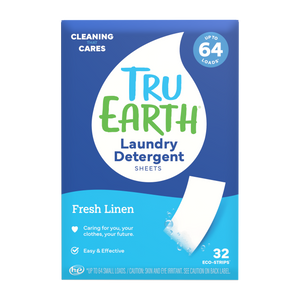In a world increasingly focused on sustainability and environmental responsibility, thrift shopping and buying second-hand goods have gained significant traction. Beyond the thrill of finding unique treasures, these practices offer substantial benefits for both the planet and your wallet.
This article delves into the eco-friendly advantages of thrift shopping, shedding light on how this conscious approach to consumption contributes to reducing waste, conserving resources, and promoting a greener lifestyle.

Reducing Fashion's Footprint: Lessening Textile Waste
Fast fashion's rapid turnover contributes significantly to textile waste. Thrift shopping counteracts this trend by extending the lifespan of garments and reducing the demand for new clothing production.
By opting for second-hand fashion, you're directly contributing to the reduction of textile waste that ends up in landfills or incinerators. Thrift stores offer an avenue to recycle fashion, helping to alleviate the negative environmental impacts associated with the fashion industry's resource-intensive processes.
Resource Conservation: Extending the Life of Products
Every item purchased secondhand is a victory against the excessive consumption of finite resources. Thrift shopping prolongs the life of products, preventing the need for new manufacturing.
This, in turn, reduces the consumption of raw materials, energy, and water required for production. By giving pre-loved items a new home, you're participating in a cycle of resource conservation that benefits both the environment and future generations.
Carbon Footprint Reduction: Minimizing Transport and Manufacturing
The production and transportation of new goods generate substantial carbon emissions. Thrift shopping significantly reduces the carbon footprint associated with manufacturing and shipping.
When you choose second-hand items, you're not only saving resources but also minimizing the greenhouse gas emissions linked to the production and transportation of new products. This small shift in your shopping habits can lead to a notable reduction in your personal carbon footprint.
Supporting Local Economies: Strengthening Community Bonds
Thrift stores often have strong ties to local communities. When you buy second-hand goods from these establishments, you're contributing to the local economy and supporting small businesses.
This financial backing can translate into improved community resources, increased job opportunities, and the growth of sustainable local economies. By thrift shopping, you're fostering a sense of community and collaboration that extends far beyond your purchase.
Promoting Ethical Consumption: A Stand Against Exploitative Practices
The fashion and consumer industries have faced criticism for their unethical labor practices. By choosing thrift shopping over fast fashion, you're sending a clear message against exploitative labor conditions and promoting ethical consumption.
Thrifted items are not associated with the same exploitative supply chains that new products might be. Your purchase becomes a declaration in favor of fair treatment for workers across the globe.
Embracing Mindful Consumerism: Reducing Demand for New Goods
One of the most impactful benefits of thrift shopping is its role in curbing the incessant demand for new goods. In a consumer-driven culture, purchasing brand-new items perpetuates the need for constant production, leading to resource depletion and environmental strain.
Thrift shopping disrupts this cycle by channeling your purchasing power into existing items, reducing the urgency for new production. This approach sends a clear signal to industries, encouraging them to adopt more sustainable practices and reduce their environmental impact.
A Lesson in Creativity and Personal Expression
Thrift shopping encourages creativity and personal expression. When you browse through second-hand items, you have the opportunity to discover unique pieces that reflect your individual style.
Repurposing and upcycling items from thrift stores can result in one-of-a-kind décor, clothing, and accessories that showcase your personality. This not only reduces the demand for new products but also adds a personal touch to your lifestyle choices, making your surroundings truly reflective of your values and tastes.
Investing in Quality: Timeless Finds with Character
Second-hand shopping offers the chance to uncover high-quality items that have stood the test of time. Many thrifted goods are from earlier eras when craftsmanship and durability were paramount.
By choosing second-hand, you're acquiring items with character and history, often at a fraction of the cost of new counterparts. These timeless finds not only contribute to your unique style but also promote sustainability by discouraging the disposable culture associated with mass-produced items.
Supporting Non-Profit Causes: Shopping with a Purpose
Thrift stores frequently operate as non-profit organizations, with the proceeds often benefiting charitable causes. Your thrift shopping endeavors directly contribute to these initiatives, allowing you to shop with a purpose. Whether it's supporting local shelters, educational programs, or humanitarian efforts, your purchases contribute to making a positive impact beyond your personal gain.

Your Role in a Greener Future
Thrifting is more than just a trend; it's a conscious choice with far-reaching environmental implications. By embracing thrift shopping and second-hand buying, you're actively participating in the reduction of waste, conservation of resources, and mitigation of environmental impact.
Your actions serve as an inspiration to others, promoting a shift toward a more sustainable and mindful approach to consumption. In a world where every individual choice matters, your decision to embrace thrift shopping contributes significantly to a greener future for our planet.

